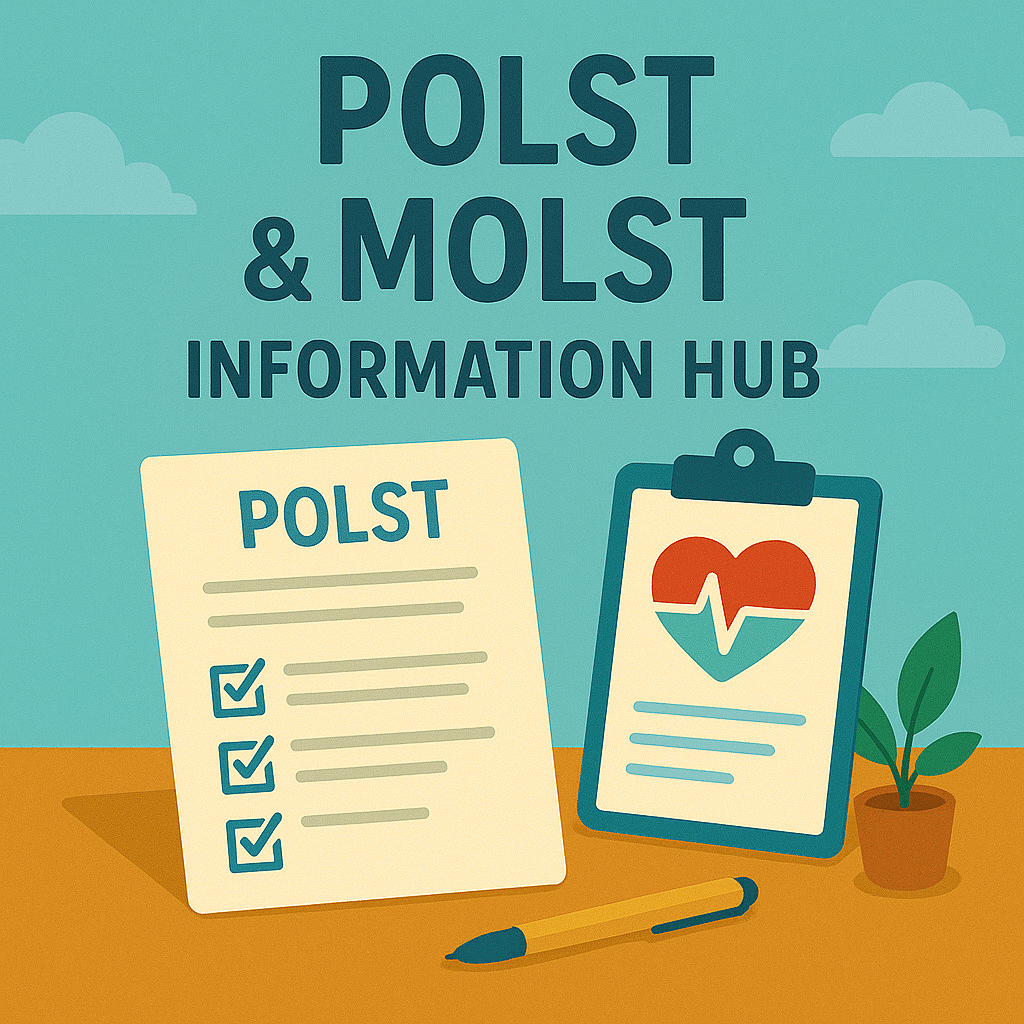Make sure emergency medical teams follow the care you want.
POLST & MOLST Information Hub
POLST and MOLST forms turn your care preferences into medical orders that guide emergency responders and health providers when every second counts.

Key Things To Know
POLST (Physician Orders for Life-Sustaining Treatment) and MOLST (Medical Orders for Life-Sustaining Treatment) are medical documents that communicate your wishes for emergency and end-of-life care. They are used when someone has a serious illness or is nearing the end of life.
- POLST and MOLST forms turn wishes into medical orders: Unlike advance directives, these documents are signed by a health care provider and followed by emergency responders, hospitals, and care teams.
- They are designed for people with serious illness or frailty: These forms are typically used when a doctor would not be surprised if the patient passed away within the next year.
- They provide specific guidance for emergency situations: This includes preferences about CPR, intubation, feeding tubes, antibiotics, and other life-sustaining interventions.
- Forms vary by state, but the purpose is the same: Some states use the term POLST, others MOLST, and a few use other acronyms, but all serve to document actionable medical preferences.
- POLST/MOLST complements, but does not replace, an advance directive: These forms work alongside your advance directive to ensure that your wishes are honored in urgent and clinical settings.
- They are portable medical orders: The form travels with you across care settings—home, hospital, nursing home, or hospice—and is meant to be visible and easy to access in an emergency.
- It must be signed by a health care provider: Usually a doctor, nurse practitioner, or physician assistant must review and sign the form with you. Some states require witness signatures.
- They can be updated or voided at any time: As your health or preferences change, you can request a new form or revise your choices with your provider.
- They are not required by law, but can be critically important: Having one ensures that emergency medical personnel know exactly what to do—and what not to do—based on your wishes.
- Talking with your doctor is essential: These forms are completed as part of a thoughtful conversation with your provider about your current health, treatment goals, and likely outcomes.
Understanding POLST and MOLST
POLST and MOLST forms are medical orders that provide clear instructions about a patient's preferences for life-sustaining treatments. These forms are designed for individuals with serious illnesses or frailty and are intended to ensure that their treatment preferences are honored across different healthcare settings.
- 1
POLST (Physician Orders for Life-Sustaining Treatment: The POLST form is a medical order signed by a physician that outlines a patient’s preferences for life-sustaining treatments. It is intended for patients with serious illnesses or those nearing the end of life.)
- 2
MOLST (Medical Orders for Life-Sustaining Treatment: The MOLST form serves a similar purpose to the POLST form but may vary slightly in terminology and implementation depending on the state. It also provides detailed instructions regarding a patient's wishes for life-sustaining treatments.)
- 3
Guides Healthcare Providers: Medical professionals can refer to your living will to make informed decisions about your care, ensuring that your treatment aligns with your values and preferences.
Importance POLST and MOLST
- 1
Ensures Patient-Centered Care: POLST and MOLST forms ensure that a patient's treatment preferences are clearly communicated and respected by all healthcare providers
- 2
Provides Clear Instructions: These forms provide clear, actionable medical orders that guide healthcare providers in delivering care that aligns with the patient's wishes.
- 3
Facilitates Informed Decisions: By discussing and completing these forms, patients and their families can make informed decisions about life-sustaining treatments in advance.
Key Components of POLST and MOLST Forms
- 1
Medical Orders: Both POLST and MOLST forms contain medical orders that must be followed by healthcare providers. These orders cover a range of treatments, including: a) CPR (Cardiopulmonary Resuscitation): Whether to perform CPR if the patient's heart stops. | b) Medical Interventions: Preferences for the level of medical intervention, such as full treatment, limited treatment, or comfort measures only.| c) Artificial Nutrition and Hydration: Decisions about the use of feeding tubes and IV fluids.
- 2
Signatures: These forms must be signed by the patient (or their legally authorized representative) and a physician to be valid.
- 3
Portability: POLST and MOLST forms are designed to be easily portable, ensuring that a patient’s treatment preferences are honored across various healthcare settings, including hospitals, nursing homes, and during emergency medical transport.
Articles
Frequently Asked Questions
Disclaimer: The information provided on this website and by Buried in Work is for general informational purposes only and should not be considered legal advice. Please consult with a qualified attorney or subject matter expert for advice specific to your situation.

